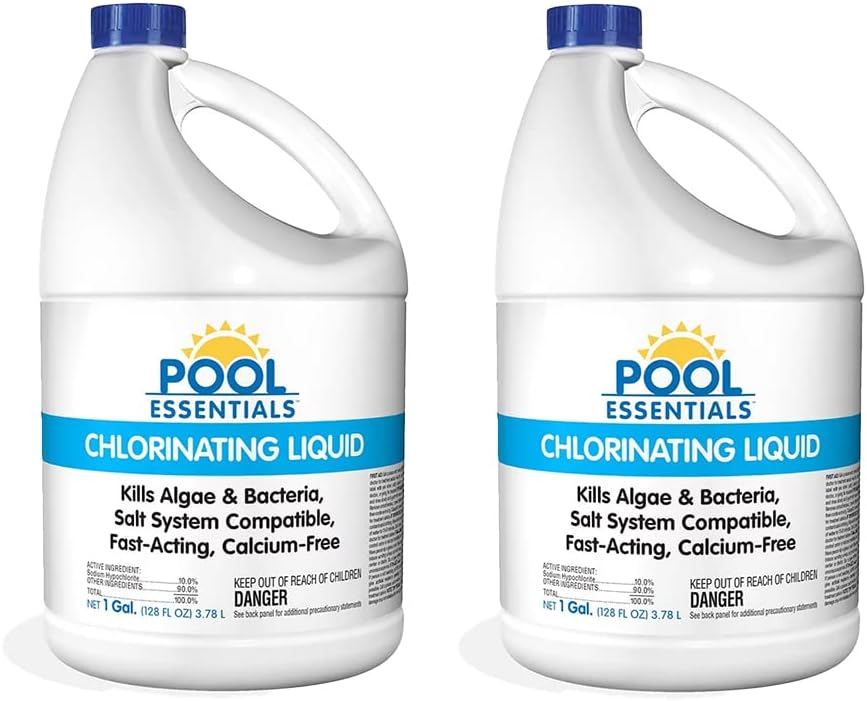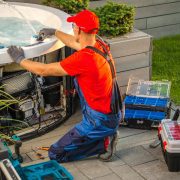
How Much Liquid Chlorine to Add to Pool
Maintaining proper chlorine levels is essential for ensuring clean and safe swimming pool water. Liquid chlorine is a popular choice for pool owners due to its convenience and effectiveness in sanitizing pool water. However, knowing how much liquid chlorine to add and how to add it properly is crucial to avoid over chlorination or under chlorination. In this article, we’ll provide a comprehensive guide on determining the correct dosage of liquid chlorine for your pool and the best practices for adding it to maintain optimal water quality.
Calculating the Proper Dosage of Liquid Chlorine:
-
- Test Your Pool Water: Before adding liquid chlorine to your pool, use a reliable pool water test kit to measure the current chlorine level. The ideal chlorine range for most pools is between 1.0 to 3.0 parts per million (ppm).
- Determine Required Dosage: Calculate the amount of liquid chlorine needed to raise the chlorine level to the desired range based on your pool’s volume. Refer to a chlorine dosing chart or use an online calculator to determine the appropriate dosage. https://poolchemicalcalculator.com/Pool-Free-Chlorine-Calculator.html
- Consider Chlorine Demand: Factors such as sunlight exposure, bather load, and water temperature can affect chlorine demand. Adjust your dosage accordingly to compensate for these factors and maintain adequate sanitation.
How to Add Liquid Chlorine to Your Pool:
- Choose the Right Time: It’s best to add liquid chlorine to your pool in the evening or at night to minimize sunlight exposure, which can cause rapid chlorine degradation. This allows the chlorine to work more effectively and last longer in the water.
- Pre-Dilute for Even Distribution: To ensure even distribution of chlorine throughout the pool water, pre-dilute the liquid chlorine in a bucket of water before adding it to the pool. This helps prevent localized over chlorination and minimizes the risk of damaging pool surfaces or equipment.
- Pour Diluted Chlorine Slowly: With the pool pump running, slowly pour the diluted liquid chlorine solution around the perimeter of the pool while walking around the edge. Avoid pouring the chlorine directly into the skimmer or near pool fixtures to prevent damage.
- Brush Pool Surfaces: After adding liquid chlorine to the pool, use a pool brush to gently brush the pool surfaces, including walls and floors. This helps distribute the chlorine evenly and ensures thorough mixing with the pool water.
- Wait Before Swimming: Allow sufficient time for the liquid chlorine to disperse and mix with the pool water before swimming. This typically takes about 30 minutes to 1 hour, depending on the circulation and filtration system.
- Monitor Chlorine Levels: After adding liquid chlorine to the pool, retest the chlorine levels periodically to ensure they remain within the recommended range. Adjust the dosage as needed to maintain proper sanitation and water quality.
Safety Precautions:
- Wear appropriate protective gear, including gloves and eye protection, when handling liquid chlorine to avoid skin and eye irritation.
- Store liquid chlorine in a cool, well-ventilated area away from direct sunlight and heat sources.
- Keep liquid chlorine out of reach of children and pets, and never mix it with other pool chemicals.
Conclusion:
Adding liquid chlorine to your pool is a straightforward process that requires careful calculation and proper dosing to maintain optimal water quality and safety. By following the guidelines outlined in this guide and taking necessary safety precautions, you can effectively sanitize your pool water and enjoy a clean and inviting swimming environment all season long. Remember to test chlorine levels regularly and adjust dosage as needed to keep your pool water balanced and crystal clear.




